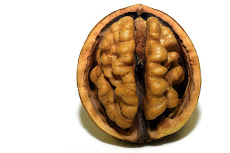From a bouncy, goofy cupcake to a brave and magnificent adult, you and your dog have spent many years together while playing, running around ,making stupid games etc. and your pooch still lives doing same but only difference is that he is less active now, he gets tired easily, his naughtiness is receding day by day, his beautiful muzzel is going grey, he is panting most of the times which means he is turning old.
Seeing your pooch turning old is a privilege. Though they have always been a puppy for us, they lived up gracefully in their canine years as well as in human years.
On an average dogs around 8-9 years old are considered as senior dogs, but their seniority also depends upon their breed. Larger breeds like great dane are generally considered old at the age of 7-8 years whereas smaller breeds like Terriers and Chihuahuas reach their golden years by the age of 11-12 years.
“A dog will teach you unconditional love. If you can have that in your life, things won’t be too bad.”
Just like medical science is enhancing the life span of human beings, proper care and attention can also help your pooch to live a long and happy life even when he is old. Let's discuss how.
Tips to take care of senior dogs
Dental care
Just like us humans dogs dental situation also tends to deteriorate with age which requires special care especially in senior days of their life. Regular brushing and taking care of their dental hygiene can prevent them from tooth decay and dental pain resulting in avoiding meals which can make them weak. Brush your four legged friends teeth often and if they don't let you do it use dental toys or get professional help.
Steps and stairs
Your pooch's joint must be getting stiff and painful which can stop them from jumping on sofas and beds or even coming close to you just to snuggle. Use steps and romps to let them enter the car, furniture or bed comfortably
Environment
Senior dogs are more sensitive to heat and cold then their own younger version. Keep environment inside house pleasant in all weathers too much cold can affect their joint whereas to much heat can make them uncomfortable and can lead to serious problems.
Accessibility
Making your house more accessible for senior dogs can ease their life significantly. Try arranging food bowls, toys near their bed so that they don't have to move around in whole house to find something to play with.
Quiet time
Senior dogs normally lose their track of time which can make them sleep anytime of the day or night. Provide a quiet and comfortable environment to them so they can relax.
Diet
Contrary to popular belief, senior dogs required more protein to get their system to work fine. Changing their diet by reducing carbohydrates as it will make them gain weight, adding protein for reducing muscle mass and some supplements like glucosamine and fish oil to reduce joint pain.
Puppy pads
Old age is like a second childhood in some context for dogs as well as us humans. Remember how you potty trained your puppy all those years ago, well, he has become the same poop machine again. Old dogs tend to lose control and accidents can happen easily. Use puppy pads for your senior dogs to let them do their deed with comfort.
Togetherness
You dog was always very needy of you and now he needs you even more. Spending some quality time together with your pooch can be very calming and comforting for them. Also this is your best time to love them to life before it's too late.
Visit vet often
Visiting to the vet once every two weeks is always advisable for senior dogs as they can develop problems very much faster than young dogs. It also ensures sound clinical health and less discomfort.
Therapy
Therapies like acupuncture and messages can be used to relieve pain and stiffness in your senior dog. Giving messages or getting them messaged form a professional can increase blood flow which can be very useful and calming for your dog.
Mental stimulation
Even though your dog is not willing to play with you any longer, training them and practicing new tricks can help them cope up with the boredom and stress and also provides valuable personal time with them.
Beds
As an adult dog you pooch mostly prefers to sleep on the floor in hot humid days but now at this age they require more comfortable beds in order to save their joints to get hurt. Sleeping on hard surfaces can also cause arthritis which can lead to more problems to your pet.
Supplements
Adding supplements like glucosamine and omega-3 fatty acids can promote joint mobility and decrease bone decay or other bones and joint related issues in them. Also supplementing with digestive enzymes and probiotics can help up with digestive problems and other major organ failures.
There is a lot we can do to make our dog have a good time. By providing them good nutritional food, ample amounts of care and by adjusting their surroundings, so they can be healthy,happy and comfortable for the years to come.

























